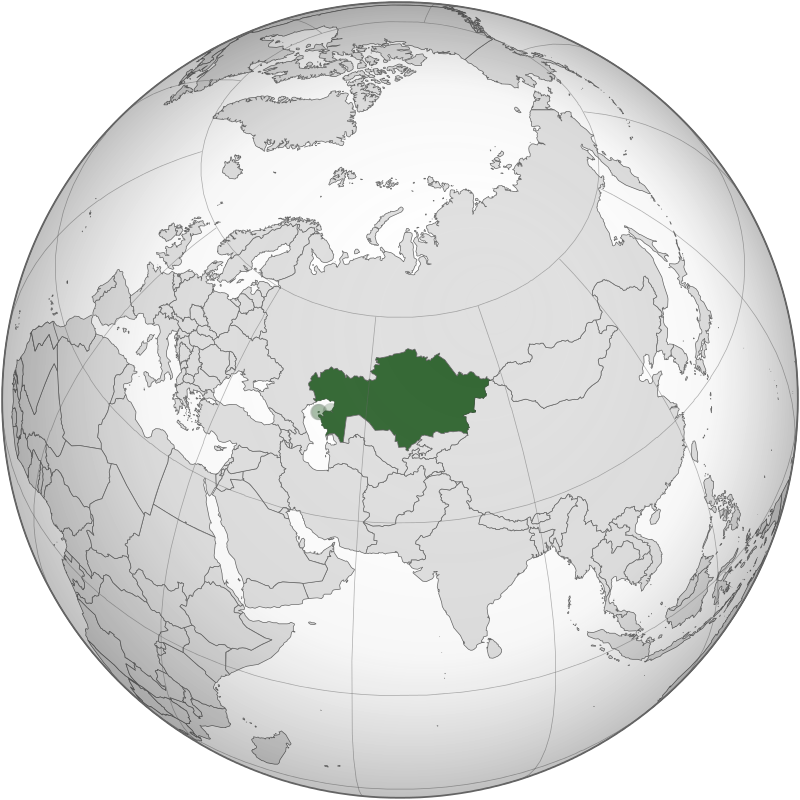Nuclear Reactors 640 - World Uranium Production and Price Fluctuations
Kazakhstan_(orthographic_projection).svg_.png

The Republic of Kazakhstan biggest country that is landlocked. It is the ninth biggest country inf the world. While the southern parts of the country are located on the continent of Asia, the northern parts are located on the continent of Europe. Kazakhstan is considered to be the economically dominant country of Central Asia. It accounts for about sixty percent of the GDP of the whole region.
Uranium exploration began in Kazakhstan in 1943 but was not a viable business until the 1970. In the past fifty years, it has been a major global source of uranium for nuclear power reactors and nuclear weapons. Analysts say that Kazakhstan has about fifteen percent of the natural uranium reserves in the world in fifty deposits in six provinces. At this time, there are seventeen operational uranium mines that produce about twenty five percent of the uranium on the global market.
In 2009, Kazakhstan became the leading producer of uranium in the world. In that year, it produced almost twenty eight percent of the worlds uranium. It accounted for thirty three percent in 2010, forty one percent in 2015 and thirty nine percent in 2015 and 2016. In 2016, uranium production peaked at twenty four thousand six hundred tons. Twenty three thousand four hundred tons was produced in 2018. There are plans to reduce production by about eight percent in 2018.
Canada is the second biggest producer of uranium behind Kazakhstan. It used to be the biggest producer in the world but its production has been declining and it fell behind Kazakhstan in 2015. In 2014, it produced only about nine thousand tons. In 2015 production rose to about thirteen thousand three hundred tons. Canada started mining uranium in the 1940s and production rose and fell as market conditions and government involvement rose and fell. Since 2006, productions hovered around eleven thousand tons until rising to fifteen thousand seven hundred tons in 2015, sixteen thousand five hundred tons in 2016 and fifteen thousand tons in 2017. A major Canadian mine was shut down indefinitely in 2018.
The spot price of uranium rose to almost thirty dollars a pound last week. This represents an increase of almost twenty percent since the beginning of 2018. The highest cost of uranium on the world market was one hundred and forty dollars in 2007.
An analysis from BMO Capital Markets stated that the rise in uranium prices will continue as Kazakhstan and Canada cut production and stockpiles of uranium are dropping for the first time in ten years. The analysis predicts that uranium prices will rise slowly and may reach fifty five dollars a pound by 2023. The cut backs by top producers will halt the dropping prices and rising stockpiles that resulted from the Fukushima disaster in 2011.
The price of uranium may be rising and stock piles diminishing but considering what happened to the Uranium market after the Fukushima nuclear disaster, all it will take is one major nuclear accident to cause another crash in world uranium prices.